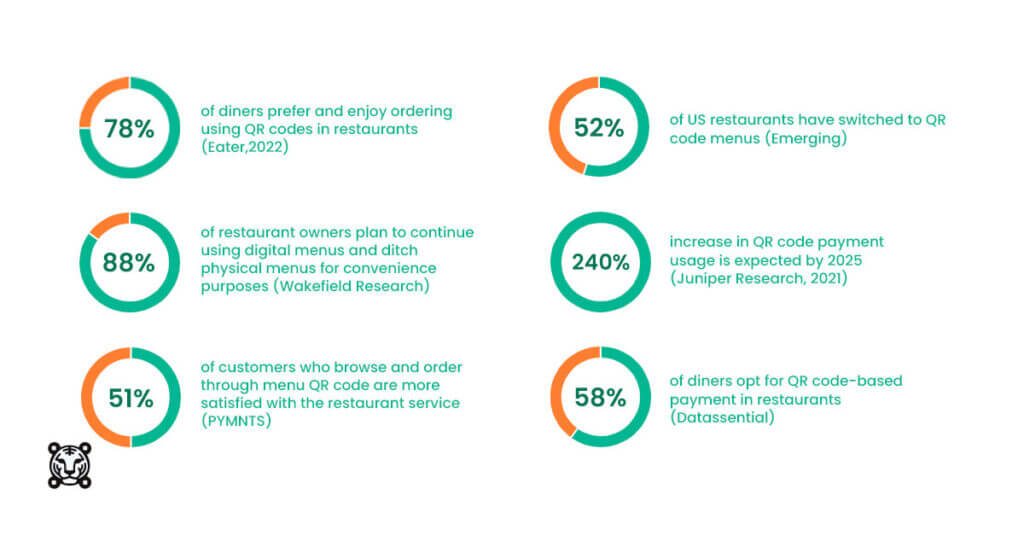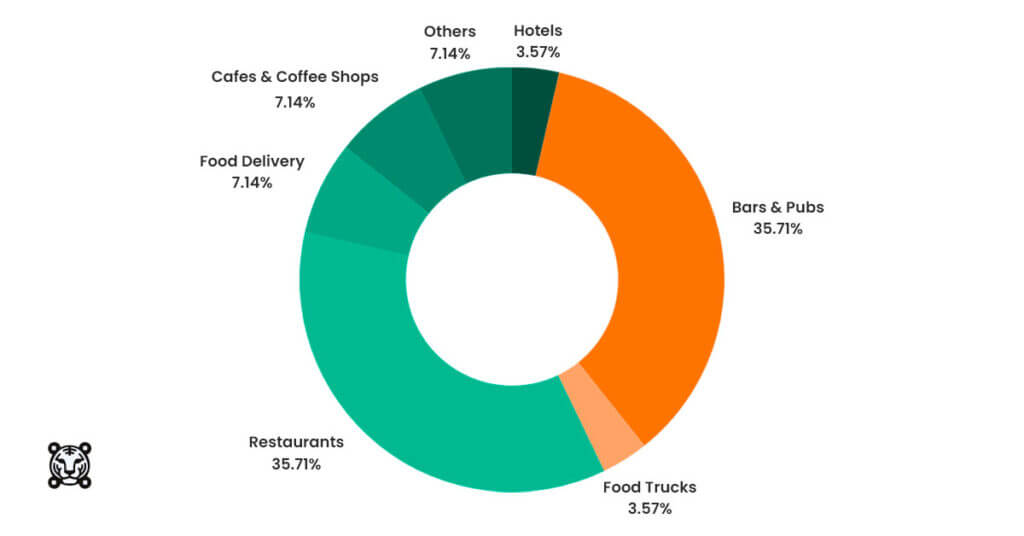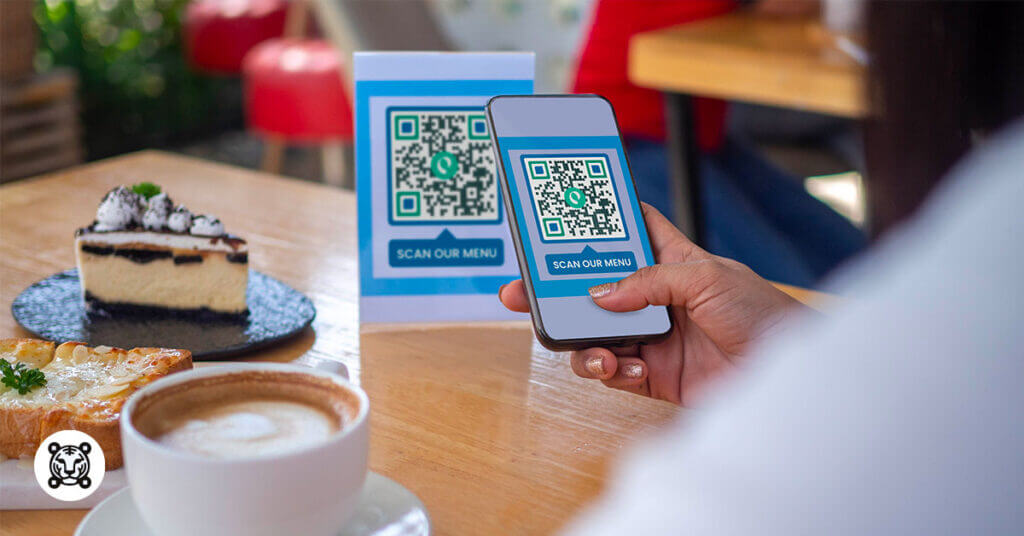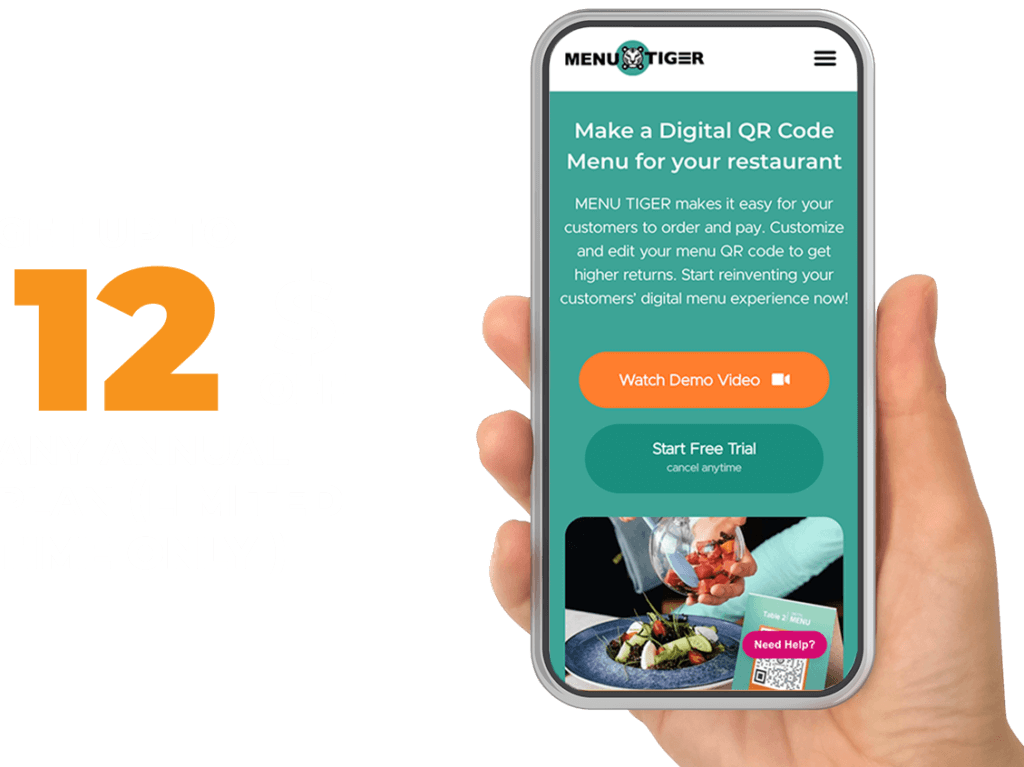Approximately three decades after its development, the QR code is finally living up to its full potential.
Considering the various use cases displayed across social media, hospitality industry websites, and other online pages, current projections strongly suggest their integral role in shaping customers’ dining experience and business owners’ managerial efficiency.
Now, it becomes imperative for us to delve deeper into the intricacies of this advanced technology.
It pays to ask: Are QR codes still relevant? Is it even sustainable? What industries are using QR codes the most?
To help you in your research, we compiled relevant statistics and other data in this QR code menu forecast to see if it is still worth investing in 2025.
Table of Contents
ToggleThe current landscape: Do people still prefer QR code menus
As we venture into the new year, one cannot help but wonder about the endurance of QR code menus in the eyes of the public.
The data suggests a resounding “Yes.”
A recent survey conducted by Eater revealed that 78% of respondents favor QR code menus over traditional paper menus.
This shift in preference can be attributed to the seamless integration of technology into our daily lives and the desire for a touchless dining experience.
The convenience of instantly accessing a menu through a smartphone without the hassle of physical contact has significantly contributed to the widespread adoption of QR code menus.
The trend is not limited to a particular age group, with users across various demographics expressing a preference for this digitized menu’s efficiency and user-friendly nature.
What is the future trend of QR codes?
What does the future hold for QR codes in the restaurant industry? As we look ahead to 2025, the forecast is promising.
This smart tech is not merely a fleeting QR code trend but a sustainable technology that continues to evolve.
According to a Juniper Research report, the global QR code market is expected to grow by 20% annually, reaching a staggering $3.1 billion by the end of this year.

One notable trend that is set to gain momentum is the integration of QR codes for payment within restaurants.
The ease of settling bills by simply scanning a code aligns with the ongoing shift toward contactless transactions.
Statistics from a study conducted by Square, a leading payment processing company, revealed that restaurants adopting QR code-based payments experience a 15% increase in table turnover, leading to a substantial boost in revenue.
Restaurants that have implemented QR codes for payments have reported significantly reduced transaction times and increased overall customer satisfaction.
Global QR code menu usage statistics
MENU TIGER, a trusted interactive restaurant menu software, offers a QR code menu as one of their main features.
And according to their database, the software feature has spread around the globe.

Countries in North America are the major users of QR code menus based on the software’s database.
Most of these users are from the United States, which has a dense amount of restaurants, hotels, bars, and even food truck businesses.
This is followed by Asia, mainly from the West Asian and Southeast Asian regions, and Europe, where countries boast restaurants offering a wide range of cuisines.
Top industries using QR code menu
QR code statistics have witnessed a remarkable surge over the years, prompting a widespread belief within the hospitality industry that digital menus are here to stay for the long term.
According to PYMNTS’s findings, there has been a staggering 150% increase in the adoption of QR codes by restaurants across the United States in the past two years alone.
This claim is also reflected in MENU TIGER’s most recent data on QR code menu usage per industry.

Take note of how the food and beverage industry takes up the larger parts of the graph, clearly depicting massive usage last 2023.
Comparing these numbers to 2022’s restaurant industry statistics will reveal that QR code usage in the hospitality industry has skyrocketed in just a year interval.
This exponential growth highlights the industry’s acknowledgment of the efficiency and convenience offered by digital menus through QR code integration.
Industry experts like Benjamin Claeys, CEO and founder of QRTIGER QR code generator, averred that QR code’s versatility and functionality extend to various industries, making it an all-rounder tool for any business.
Additionally, Bo Peabody, Seated’s Executive Chairman, revealed in his CNBC interview that running and managing reservations and guess sitting has become more efficient when they integrate QR codes.
Addressing concerns: “I hate QR code menus”
Despite the growing popularity of QR code menus, a vocal minority continues to express disdain for this technology.
Understanding and addressing these concerns is crucial for the continued success of QR codes in the dining industry.
Common complaints from people who say I hate QR code menus include connectivity issues, the perception that they are technologically challenging to use, and nostalgia for traditional paper menus.
However, advancements in technology have mitigated many of these concerns.
The development of offline-accessible QR code menus and user-friendly interfaces has minimized connectivity issues.
Additionally, widespread smartphone usage has significantly increased technological literacy, making QR code menus more accessible to a broader audience.
Benefits of QR codes in restaurants
The benefits of QR codes in restaurants extend beyond the digitization of menus.

Seamless integration of this technology offers multifaceted advantages for both patrons and restaurant owners.
Notable benefits include:
Contactless dining
The conscious shift towards contactless dining facilitated by QR code menus responds to the heightened awareness of hygiene and safety in public spaces.
QR code menus allow patrons to access the restaurant’s offerings directly from their smartphones, eliminating the need for physical menus passed between multiple hands.
This directly addresses consumer preferences for a safer dining experience and demonstrates the restaurant’s commitment to adopting innovative solutions prioritizing public health.
Real-time updates
Unlike traditional paper menus that require costly and time-consuming reprints, digital menus accessed via QR codes let restaurants make instantaneous changes to their offerings, promotions, and special deals.
This agility enables establishments to adapt swiftly to evolving customer preferences, seasonal ingredients, and unforeseen circumstances such as supply chain disruptions.
As a result, patrons can consistently access up-to-date information, ensuring a dynamic and engaging dining experience.
Analytics and insights
By tracking customer interactions with the menu QR code, restaurant owners can discern patterns in customer preferences, resulting in easy identification of popular dishes and beverages.
Furthermore, the data obtained from QR code usage reveals peak dining times, allowing establishments to optimize staffing levels and streamline operations for maximum efficiency.
With this information, restaurant owners can make informed decisions, from menu adjustments to targeted promotions.
Cost savings
The transition to digital menus modernized the dining experience and presented a compelling case for cost savings and environmental sustainability.
By eliminating the need for traditional printed menus, restaurants significantly cut down on printing expenses associated with designing, producing, and regularly updating physical copies.
This translates to direct financial savings and aligns with sustainable business practices, as it contributes to reducing paper waste.
Enhanced customer engagement
By integrating QR codes into loyalty programs, restaurants can incentivize repeat business, rewarding customers for their continued support.
Not only that, QR codes serve as an effective channel for promotions and special offers, allowing establishments to communicate directly with their audience and drive traffic during specific periods or events.
The interactive nature of QR codes facilitates seamless customer feedback collections, enabling restaurants to gain valuable insights into preferences and areas for improvement.
Table turnover optimization
The integration of QR codes for both ordering and payment processes within restaurants has proven to be a game-changer, significantly optimizing table turnover rates.
When you have enhanced turnover, this automatically translates to quicker service for patrons and also results in a substantial boost in revenue for the restaurant.
Through QR codes, diners are served more promptly, creating a dynamic dining atmosphere and leaving a positive impact on the overall customer experience.

The conclusion: QR code menus are here to stay
From contactless menus to real-time updates, QR code statistics revealed that this technology is not just a trend; they are a practical solution to modern dining needs.
And the numbers don’t lie—their usage is still on the rise, making them an essential part of our everyday dining experience.
From food delivery, menu access, and ordering to payment, QR codes ultimately offer convenience that old-school printed menus don’t.
So, as you start or continue your hospitality business this year, don’t miss out on the simplicity and innovation that QR code menus bring to the table.
Let this easy-to-use technology enhance your dining moments.





